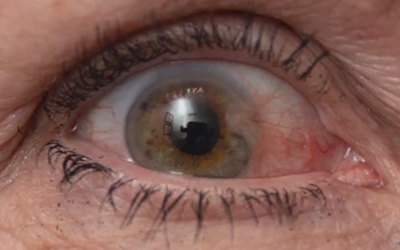Pterygium surgery is a procedure performed to remove pterygia from the eye. Pterygia is a noncancerous conjunctiva growth in eyes.

Some facts about Pterygium Surgery:
- Conjunctiva is the clear tissue that covers the white part of the eye and the inside of the eyelids.
- The cornea will be covered when the overgrowth of conjunctiva tissue is severe and interfere with your vision.
- Usually there is no problems or any treatment is required for a pterygium, but it can be removed if it interferes with your vision.
- It may occurs in people who live in warm climates and spend a lot of time outdoors in sunny or windy environments as too much exposure to ultraviolet (UV) light can lead to these growths.
- People whose eyes are exposed to certain elements such as pollen, sand, smoke or wind on a regular basis have a higher risk of developing Pterygium.
- Redness, blurred vision, and eye irritation are some of the common symptoms of Pterygium. a burning sensation or itchiness can also exist in some cases.
- It can interfere with your vision if a pterygium grows large enough to cover your cornea.
- You may feel like you have a foreign object in your eye because of thick or larger pterygium.
- You may not be able to wear contact lenses when you have a pterygium due to discomfort.
- A pterygium can lead to severe scarring on your cornea which can cause vision loss.
- Eye drops or ointment can be used to treat inflammation for minor cases.
- Treatment can involve surgical removal of the pterygium in the more serious cases.
- A physical examination can be done by your doctor using a slit lamp to diagnose a pterygium.
- Visual acuity test, Corneal topography and Photo documentation are some additional tests that may be required for diagnosing a pterygium
- Surgery is recommended to remove the pterygium if eye drops or ointments does not provide relief.
- Surgery is also required when there is a loss of vision or a condition called astigmatism occurs because of pterygium, which can result in blurry vision.
- Surgical procedures can be discussed with your doctor if you want the pterygium to be removed for cosmetic reasons.
- Wearing sunglasses that provide protection from the ultraviolet (UV) rays of sun can prevent pterygiums from coming back if you have had any removed.
- Limiting your exposure to pollen, sand, smoke, sunlight or wind can slow its growth.

Preparation for Pterygium Surgery:
- A general guidelines will be provided by the doctor before the surgery to prepare for your pterygium surgery.
- You may be asked to fast or only eat a light meal before the surgery.
- You may be asked to not wear the contact lenses for at least 24 hours before the procedure, if you wear them.
Procedure of Pterygium Surgery:
- The pterygium surgery is a minimally invasive surgery that generally takes 30 to 45 minutes.
- Sedation will be given to you to numb your eyes so that discomfort during surgery can be prevented.
- Then the surrounding areas will be cleaned by the doctor.
- The pterygium along with some associated conjunctiva tissue will be removed by the doctor.
- The pterygium will be replaced with a graft of associated membrane tissue once it is removed to prevent recurrent pterygium growths.
- Sutures or fibrin glue will be used by the doctor to secure the conjunctiva tissue graft in its place, once the pterygium is removed.
- The possibility of recurring pterygia will be reduced by this procedure.
- Dissolvable sutures can cause more discomfort postsurgery, and the recovery time can be extended for several weeks.
- Inflammation and discomfort can be reduced while the recovery time can be reduced to half using fibrin glue, compared to using sutures.
- Fibrin glue may carry the risk of transmitting viral infections and diseases as it is a blood derived product.
- Fibrin glue is also more expensive than sutures.
- Bare sclera technique to remove pterygia from the eye is another option, though it carries an increased risk of pterygium recurrence with it.
- The pterygium tissue will be removed without replacing it with a tissue graft which leaves the underlying white of the eye exposed to heal on its own.
- The risks from sutures or fibrin glue can be eliminated by using Bare sclera technique. However, there is a high chance of pterygium regrowth, and at a larger size.
Recovery from Pterygium Surgery:
- An eye patch or pad will be applied by your doctor at the end of the surgery for comfort and to prevent infection.
- You should not rub your eyes after the procedure to avoid dislodging the attached tissue.
- Aftercare instructions, including cleaning procedures, antibiotics, and scheduling follow-up visits will be provided by your doctor.
- Recovery time depends on the type of technique used during surgery. Usually, it takes a couple of weeks to a couple of months for your eye to completely heal, without signs of redness or discomfort.
Complications from Pterygium Surgery:
- It is normal to experience some discomfort and redness and is also common to notice some blurriness during recovery.
- Schedule a visit to your doctor if you begin to experience vision difficulties, a complete loss of vision, or notice pterygium regrowth
- There can be recurrence of pterygium after being surgically removed.
- You might also feel dry and irritation in your eyes after surgery.
- Medications can be provided by your doctor to provide relief and reduce the risk of having a pterygium grow back.
